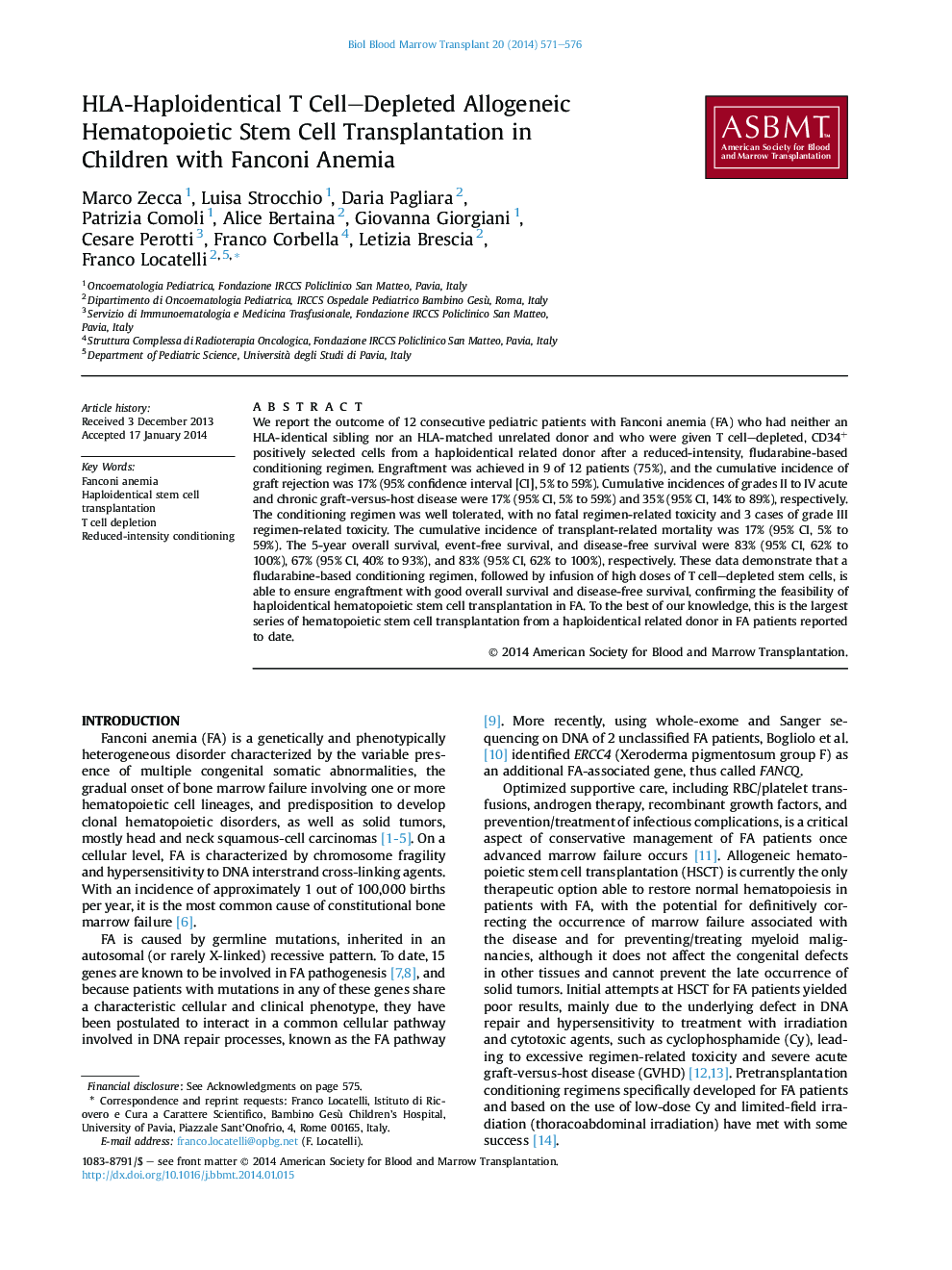| Article ID | Journal | Published Year | Pages | File Type |
|---|---|---|---|---|
| 2104600 | Biology of Blood and Marrow Transplantation | 2014 | 6 Pages |
We report the outcome of 12 consecutive pediatric patients with Fanconi anemia (FA) who had neither an HLA-identical sibling nor an HLA-matched unrelated donor and who were given T cell–depleted, CD34+ positively selected cells from a haploidentical related donor after a reduced-intensity, fludarabine-based conditioning regimen. Engraftment was achieved in 9 of 12 patients (75%), and the cumulative incidence of graft rejection was 17% (95% confidence interval [CI], 5% to 59%). Cumulative incidences of grades II to IV acute and chronic graft-versus-host disease were 17% (95% CI, 5% to 59%) and 35% (95% CI, 14% to 89%), respectively. The conditioning regimen was well tolerated, with no fatal regimen-related toxicity and 3 cases of grade III regimen-related toxicity. The cumulative incidence of transplant-related mortality was 17% (95% CI, 5% to 59%). The 5-year overall survival, event-free survival, and disease-free survival were 83% (95% CI, 62% to 100%), 67% (95% CI, 40% to 93%), and 83% (95% CI, 62% to 100%), respectively. These data demonstrate that a fludarabine-based conditioning regimen, followed by infusion of high doses of T cell–depleted stem cells, is able to ensure engraftment with good overall survival and disease-free survival, confirming the feasibility of haploidentical hematopoietic stem cell transplantation in FA. To the best of our knowledge, this is the largest series of hematopoietic stem cell transplantation from a haploidentical related donor in FA patients reported to date.
